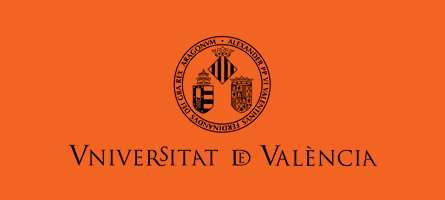Digital Participation in Political Parties. Autonomy and Militant Practices Online
DOI:
https://doi.org/10.7203/rd.v0i1.3Abstract
In the following article, the dynamics of digital participation are outlined in the two main political parties, which have the greatest parliamentary representation in Spain. Across 40 in-depth interviews carried out with members of the PP and PSOE, we identify their degree of autonomy in relation to the party structures, as well as the key features of their political practices online. The main objective of this work is to reflect on the changes in the actions employed within the parties and the tools employed by party militants.
References
Anduiza, E. (2009): “The Internet, Election Campaigns and Citizens: State of Affairs”. Quaderns del Cac, 33, pp. 5-12.
Chun, S., Shulman, S. y Sandoval, R. (2010): “Government 2.0: Making connections between citizens, data and government”. Information Polity The International Journal of Government & Democracy in the Information Age. Vol. 15, Issue ½, pp. 1-9.
De Landshteer; Ch. Krasnoboka, N. y Neuer C. (1999): “La facilidad de utilización de los “web sites” de partidos políticos. Estudio de algunos países de Europa del Este y Occidental”. CIC, Cuadernos de Información y Comunicación, nº6, pp.107-162.
Gibson, R.; Ward, S. y Lusoli, W. (2003): “The Internet and Political Campaigning: The New Medium Comes of Age?”. Representation, Vol. 39, Nº. 3, pp. 166-180.
Jackson, N. y Lilleker, D. (2009): “Building an architecture of participation? Political parties and Web 2.0 in Britain”. Journal of Information technologies and Politics, Vol. 63, Nº. 4, pp. 232-250.
Mozorov, E. (2011): The netdesilusion. The dark side of Internet freedom. Public Affairs.
Noguera, J. M. (2009): “Actitudes de los políticos en Internet: viejos mensajes frente a nuevas relaciones”. En R. Zamora Medina (coord.), El candidato ‘marca’. Cómo gestionar la imagen del líder político. Madrid: Fragua
Norris, P. (2005): “The Impact of the Internet on Political Activism: Evidence from Europe”. International Journal of Electronic Government Research, Vol. 1, Nº. 1, pp. 525-536.
Putnam, R. (2000): Bowling Alone: The Collapse and Revival of American Community. New York: Cornell University Press
Sampedro, V.; Sánchez-Duarte, J. M. y Campos, E. (2014): “Participación ciudadana en las campañas electorales. Debates teóricos y una aproximación tipológica”. En Cotarelo, R. y Olmeda, J. A. (Comps.) La democracia del siglo XXI. Política, medios de comunicación, internet y redes sociales. Madrid: Centro de Estudios Políticos y Constitucionales.
Sampedro V.; Sánchez-Duarte, J. M. y Polleti, M. (2013): “Ciudadanía y tecnopolítica electoral. Ideales y límites burocráticos de la participación digital”. Revista Co-herencia, Vol. 10, Nº 18, pp. 105-136.
Sampedro, V. y Sánchez-Duarte, J. M. (2011): “La red era la plaza”. En: Sampedro, V. (ed.) Cibercampaña. Cauces y diques para la participación. Las elecciones generales de 2008 y su proyección tecnopolítica. Madrid: Editorial Complutense, pp. 237-246. Disponible en internet: http://www. ciberdemocracia.es [Consulta: 25 de octubre de 2014
Stromer-Galley, J. (2000): “On-line interaction and why candidates avoid it”. Journal of Communication, Vol. 50, Nº. 4, pp. 111-131
Taylor, S.J y Bogdan, R. (1987): Introducción a los métodos cualitativos de investigación: La búsqueda de significados. Barcelona: Paidós Básica.
Van Laer, J. y Van Aelst, P. (2010): “Internet and social movement action repertoires”. Information, Communication & Society, 13:8, pp. 1146-1171.
Downloads
Published
Issue
Section
License
Author rights apply to contributors. The journal reserves the right to be the first to publish the submission, following the Creative Commons Attribution License that allows for others to share the publication and acknowledges its authorship and the original publication within this journal.
Everyone who sends a manuscript is explicitly accepting this publication and edition cession. In the same way, he/she is authorizing Dígitos to include his/her work in a journal’s issue for its distribution.







